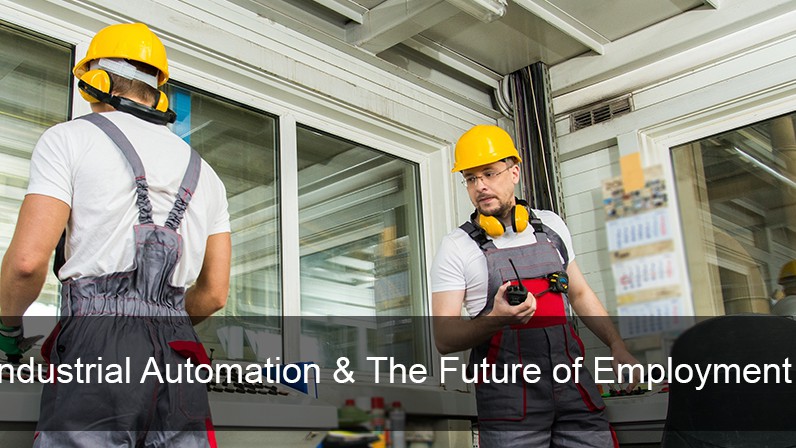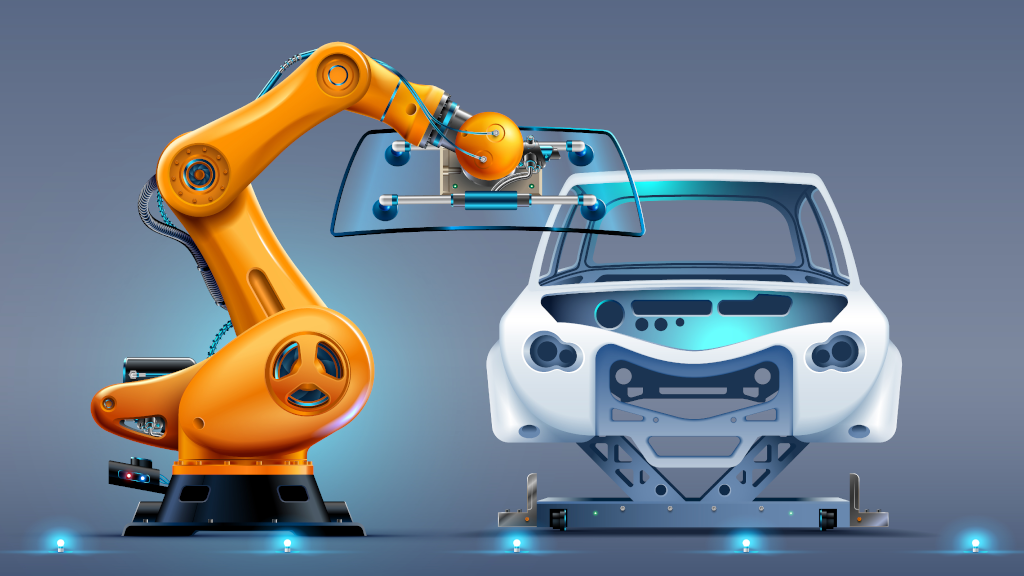Optimization is a rather hot buzzword that’s thrown around with abandon in several industries, and in none more so than the manufacturing sector. Truthfully, optimization means something very similar in several industries: improving efficiency by streamlining tasks that can stand to be done in a simpler way. This is a philosophy we’ve seen readily embraced across factory floors with processes such as additive manufacturing where a printer, a rugged computer, and some software are all that’s needed to create parts that would otherwise take teams of people and hours of labor. Cut to the present, and we’re seeing that same adage of optimization being enacted through a piece of tech many more commonly associated with the retail space. We’re beginning to see a rise in Robotic Process Automation (RPA) in manufacturing.
Why is that the case? That’s a question that can best be answered by first defining what robotic process automation in manufacturing looks like, what new benefits it’s delivering, and how it’s being leveraged.
Robotic Process Automation Definition
Article Guide
Robotic process automation is software designed to integrate with and automate manual processes for the sake of minimizing human error and boosting efficiency.
These kinds of solutions are usually employed by enterprise businesses and specifically for menial, repetitive tasks such as payment/refund processes, contract generation and more. Robotic process automation solutions are, thus, very simple programs designed to handle responsibilities with minimal amounts of variables, processes that involve just plugging in values into a form and so on.
On paper, this doesn’t seem like something readily applicable in the manufacturing space. After all, factory floors are constantly abuzz with smarter technology such as AI in the wake of the fourth industrial revolution. So then, what benefits are manufacturers seeing in this retail-based solution?
The Benefits of Robotic Process Automation in Manufacturing
Much like in retail, robotic process automation in manufacturing is wonderful for cutting down on time wasted performing menial tasks. It’s easy to see how this can translate into more money saved as well since cutting down on human error means less time and resources wasted on handling botched forms such as part orders and contracts.
One of the most exciting prospects of robotic process automation in manufacturing is that it gives manufacturers more opportunities to transition into direct-to-consumer sales. Ever since the COVID-19 pandemic rocked the world of manufacturing by uprooting supply chains, several manufacturers have begun adopting a policy of self-reliance. Not only has this translated into many localizing their entire supply chains, it also prompted many to consolidate even the selling of their products under their own jurisdiction. In fact, according to Clarkston Consulting, during the first week of stay at home orders, there was an increase of 14% in the e-commerce marketplace brought on by more shoppers purchasing online as well as more businesses and manufacturers offering their products more readily over the digital storefront. Robotic process automation software has been integral in making these transitions to direct-to-consumer sales possible for manufacturers.
RPA Use Cases in Manufacturing
In conjunction with panel mount PCs and RFID enabled rugged windows tablets being used to scan and keep track of stock for order fulfillment, several manufacturers have also begun turning to RPAs in order to transition into sales. Below are a few of the impressive RPA use cases in manufacturing that have caused many to start paying attention to this staple of retail software.
1.) Bill of Material Creation
In manufacturing, the bill of materials (BOM) is a document that lists all of the raw materials and parts that go into the creation of a product. The BOM is used across several parts of the production process from the application of certain certifications to educating employees on what products and materials need to be ordered in order to produce a product, how to go about ordering those parts, and in what quantity to order.
Robotic processing automation in manufacturing spaces is capable of running the process of opening up a template for a BOM and automatically filling in empty sections with provided information. This is a process that’s often performed by an employee, opening up the door to costly human error as well as time lost on manually creating a list, both pain points alleviated by an RPA’s ability to automate this practice.
2.) Inventory Management
Inventory management is already pretty important on the factory floor. Keeping track of parts and materials is essential in creating products in the first place, afterall. When dealing with sales to the customer, however, inventory management becomes even more important. In these cases, botched inventory numbers mean more than lost productivity, it means unfulfilled orders, angry customers, and a destroyed reputation if those orders are left unfulfilled long enough.
Addressing this risk, manufacturers have begun using RFID equipped hardware such as industrial all in one pc workstations in order to allow employees to quickly log equipment and stock as it’s replenished and depleted. From there, RPA software can be used to auto fill in requests to order more products or create more stock.
3.) Invoice Generation
Invoices are a very common procedure in several manufacturing and retail procedures. That said, in a manufacturing environment planning on also dabbling in sales, the amount of invoices and the amount of information being inputted into them is bound to rise and with it, the possibility of human error rises with it. Unfortunately, a misplaced value or misspelled name can cause quite a few issues in receiving payment for a service, all of which can quickly domino on top of each other and slash productivity while mistakes are meticulously traced back and debated.
RPA software is able to scan pdfs of invoices, sans information, and detect where info needs to be placed and which pieces of data belong where. From there, it can also automatically send those invoices to all applicable teams within your facility for proofing, approving, and more before it’s sent off. Cutting out human error entirely and also allowing employees to use that time that would otherwise be spent on monotonous data entry somewhere more useful.
Robotic Process Automation in Manufacturing will Become the Norm
It’s very likely that this philosophy of self-sustainability will continue long beyond the current COVID pandemic. Enterprises and manufacturers alike are beginning to see the merits in localizing supply chains and bringing in as many key responsibilities closer to their base of operations as possible. The rise in robotic process automation in manufacturing is only one consequence of that shift in operation ideology. For more information on how your factory can begin implementing robotic process automation or for more RPA use cases in manufacturing, contact an expert from Cybernet today.
Industrial Automation & The Future of Employment
January 8, 2017
The discussion about industrial automation replacing the human workforce has a long history and goes back to the Industrial Revolution, but it is the advent of the PC in the 80s that has changed the way we work forever.…
0 Comments10 Minutes
The Use of Industrial Computers in the Automotive Industry
August 20, 2019
The automotive industry invented automation: it’s no surprise that they’ve embraced industrial computers faster than any other field of manufacturing. Because automotive manufacturing requires flexible solutions that…
0 Comments7 Minutes
You Can't
Learn from a Pop-up
But we can deliver knowledge to your inbox!
We dive deep in the industry looking for new trends, technology, news, and updates. We're happy to share them with you.
Knowledge, News, and Industry Updates Right in Your Inbox




